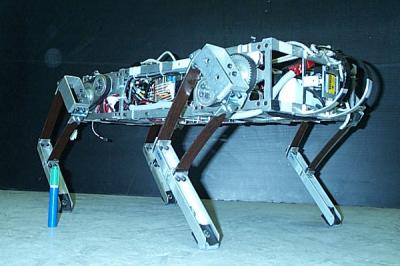According to Ioannis Poulakakis, assistant professor at University of Delaware, while humans and animals can easily navigate terrains, a major part of the Earth's surface still cannot be accessed by standard tracked or wheeled vehicles.
 University of Delaware's Ioannis Poulakakis is investigating control strategies in four-legged running robots like this one as part of a new National Science Foundation grant. Pictured is Scout II, a robot on which he worked while a graduate student at McGill University. Credit: University of Delaware
University of Delaware's Ioannis Poulakakis is investigating control strategies in four-legged running robots like this one as part of a new National Science Foundation grant. Pictured is Scout II, a robot on which he worked while a graduate student at McGill University. Credit: University of Delaware
According to him, legs have the possibility to extend robots’ mobility and can allow them to be used in search and rescue operations.
The National Science Foundation (NSF) has awarded a $265,532 grant to devise systematic control strategies that can function together with the natural dynamics of a robot to create reliable, quick and effective running motions.
The project will primarily focus on the mobility of four-legged robots (quadrupeds) by using elastic energy storage elements like springs.
Poulakakis explained that the biomechanics study has shown that running and spring are closely related. While running, the leg’s knee first bends and then extends. This prepares the human body for take-off. When the knee is bent, energy gets stored in muscle fibers or tendons, and when the knee is extended the same energy is released, pushing the body in the upward and forward directions. To put it simply, while running, animals adjust their musculoskeletal system and their center of mass seems to be moving as if chasing the movement of a pogo-stick.
Poulakakis informed that the same hypothesis can be used on robots since the pogo-stick represents a simple mechanical system, which can be researched by applying the laws of physics.
If successful, the proposed research can allow quadrupeds to move quickly and reliably. The robots can be made to prevent themselves from falling and imitate the running motion of animals. In addition to search and rescue operations, robotic quadrupeds offer potential applications in military and agricultural industries.
The study was funded by NSF’s Division of Civil, Mechanical and Manufacturing Innovation (CMMI).